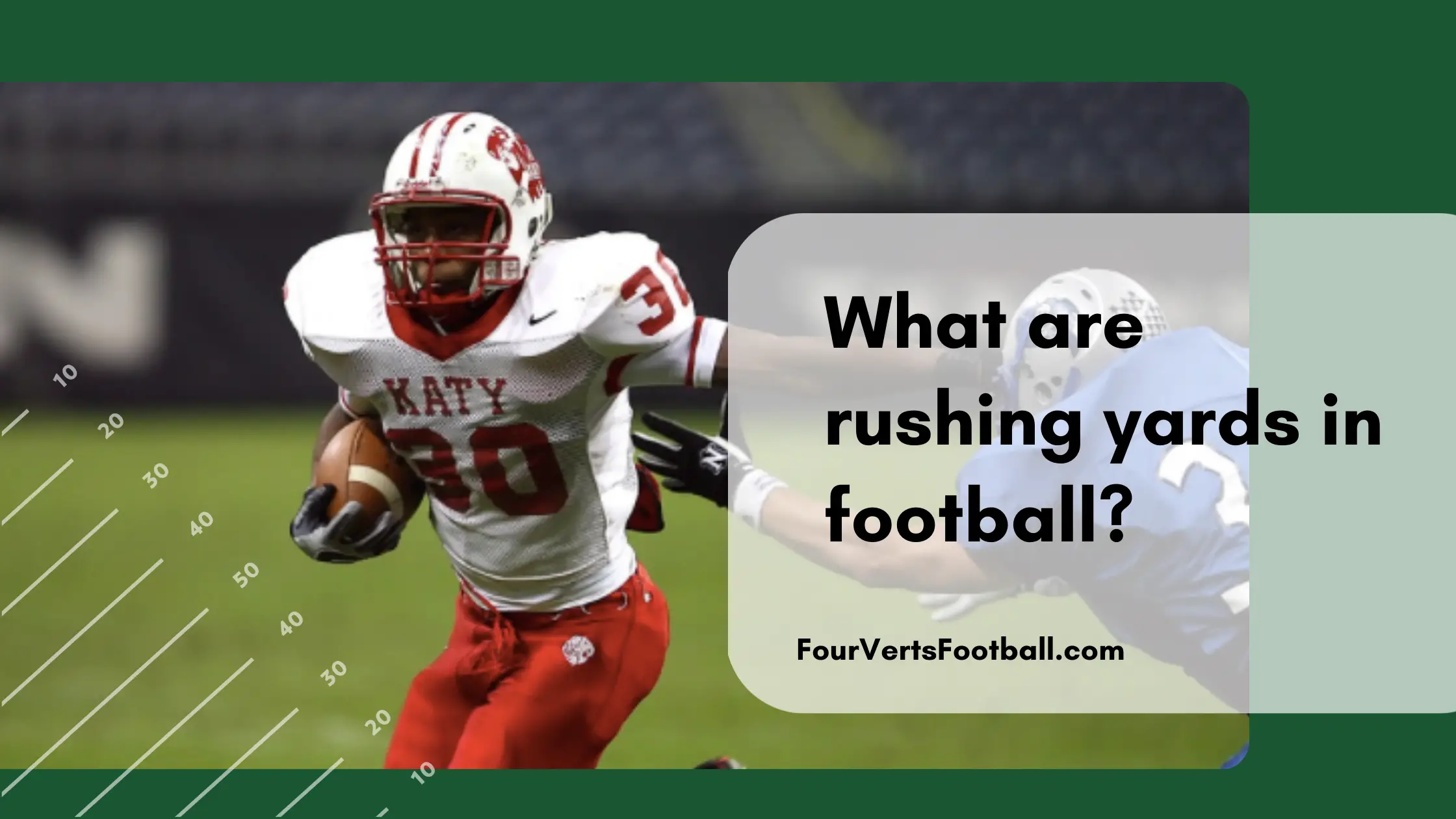Rushing yards in football is a statistic that measures how many yards a player gained after being handed or laterally tossed the ball.
In other words, rushing yards are given to a player based on how many yards he gained on a rushing play. To understand rushing yards it is important that you understand the difference between rushing and passing.
Rushing plays occur when the team progresses the ball without a forward pass. Whether it’s a handoff, lateral pass or a direct snap they are all considered rushes which means the ball carrier will gain rushing yards.
Passing plays, and passing yardage is only gained on plays in which a forward pass is caught. Even if the forward pass is thrown and caught behind the line of scrimmage this is still considered a passing play.
How Do You Calculate Rushing Yards?
Calculating rushing yards in football is quite a simple process.
Rushing yards are calculated by determining how many yards a player lost or gained from the line of scrimmage.
If a player goes past the line of scrimmage he will gain yards. If he is tackled behind the line of scrimmage he will lose yards.
The total rushing yards a player accumulates will be all the yards gained past the line of scrimmage minus all the yards lost behind the line of scrimmage.
The yards gained after subtracting the negative yards is the total rushing yards a player has.
What Positions Get The Most Rushing Yards?
Now that you understand what rushing yards are you may be wondering which positions tend to get them.
Running Back
Running back is the position that gets far and away the most rushing yards. The reason for this is that these players are specifically used to carry the football.
This position will have more rushing attempts than any other position. These players will usually be given handoffs many times throughout the game.
A common metric of a good game by a running back is to reach 100 rushing yards.
Full back
Full back is another position that picks up rushing yards though they are becoming less and less frequent.
When the NFL featured larger and slower players fullbacks were a common weapon used to rush the ball. Nowadays the size of the fullback has slowed them down to the point they rarely received handoffs.
Though every now and then a fullback will be utilized rushing the ball in short-yardage situations.
Quarterbacks
The quarterback position is another that often racks up rushing yards throughout a game. Modern-day football has put an emphasis on quarterbacks having mobility.
These new-age quarterbacks can throw the ball but also have the ability to run the ball as well.
Some of these quarterbacks are so run focused that they will end a game with more rushes than the running back.
This often results in a large number of rushing yards for the quarterback position.
Additionally in the NCAA rushing yards are reduced when a quarterback gets sacked. A sack is counted for negative rushing yards against the quarterback.
This is not the case in the NFL and can greatly affect the rushing yards statistic for collegiate players.
That’s all on rushing yards learn about all-purpose yardage or yards gained from scrimmage in American football.

